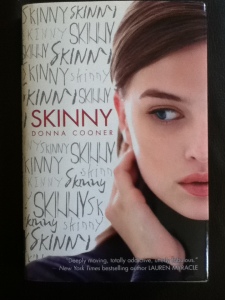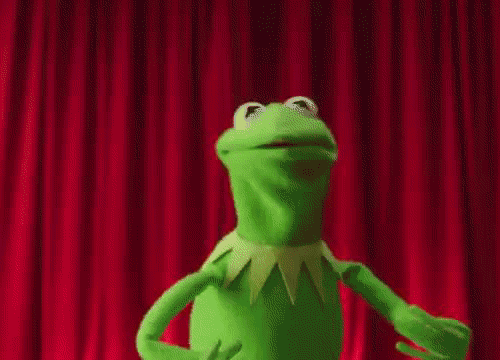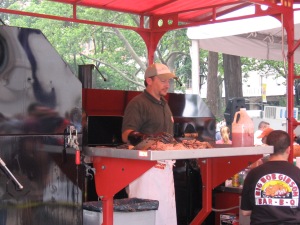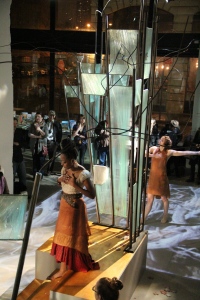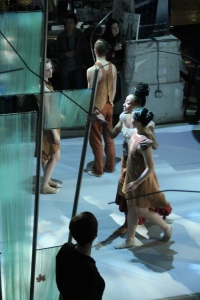This past week, I read three books by the same author: Courtney Summers. She writes raw and real YA contemporary (with one notable exception) in which the characters aren't always likable—in fact, sometimes they're downright unpleasant—and yet you still care tremendously about what happens to them. Not an easy task!
But jumping back a little, I first experienced Summers' talent back in January, when a friend recommended the author's debut, Cracked up to Be. She said elements of my own work-in-progress reminded her of this book, so I immediately ordered a copy to check it out. I really enjoyed it. The main character, Parker Fadley, has basically self-destructed. She was cheerleading captain, a great student, an all-around popular girl (despite not always being that nice—something Summers examines in more than one book), and now she's in a downward spiral, drinking too much, on suicide watch. Why? As the back cover copy says, "Something horrible has happened, and it just might be her fault."
Parker is not a nice person. She's angry and spiteful and sarcastic and downright MEAN. But Summers also gives you glimpses into the hurt, scared girl beneath the tough outer persona. For me, those glimpses were the main reason I couldn't put the book down. Something had gone terribly wrong in this girl's life, and not only did I want to find out what it was, I also wanted, and needed, to see her find some relief.
That's a theme that runs through all of Summers' books, as it turns out. I read Some Girls Are, Fall for Anything, and This Is Not a Test over a period of about four days total last weekend and at the start of this week, and while I definitely enjoyed some of them more than others, I came out of that reading spree really admiring Summers' work.

My favorite of those three was Fall for Anything. It's about a girl, Eddie, whose father has just committed suicide. No one saw it coming, and Eddie can't stop looking for a reason why. Her relationships are suffering, too. Her mom is almost catatonic with grief, and her best friend, Milo, feels sidelined as Eddie gets more and more obsessed with solving the mystery of her dad's suicide. When Eddie meets Culler Evans, a former photography student of her father's, they join forces to look for clues based on her father's final photos. But not all questions have answers, and not everything is what it seems...
Eddie's grief and desperation were so real. Each action she took felt like the natural next step for someone who's been sucker-punched by life, who feels adrift and unsupported even while not accepting support from people who care. Even when I started to get that "something's not right" feeling in my gut, I was 100% with the character in her need to believe that she could figure things out. I couldn't put this one down.
I similarly couldn't put down Some Girls Are and This Is Not a Test, even if I didn't enjoy the reading experience quite as much. With Some Girls Are, the reason was sheer brutality. The book was "Mean Girls" on steroids. Regina is best friends with the meanest, most popular girl in school—until she gets caught doing something she shouldn't be doing (and didn't really do) and is unceremoniously booted from the clique. Now unpopular, she is forced to face the fact that as Anna's best friend, she basically alienated everyone else in the school. She spread terrible rumors about people. Got them in trouble. Made people hurt the way she is now hurting. And now that she's on the receiving end of Anna's malice, no one wants to come to her aid.
This book was...well, I already said brutal. Regina takes an emotional battering (and at one point, is actually beat up by her former "friends"). She hits back, too. As desperate and unhappy as she is, she's not a nice person. Just because she knows she's not nice, doesn't mean she knows how to suddenly make it better. She's in survival mode. Attack mode. This is an angry book. From calculating, powerful Anna to her vengeful new sidekick Kara to Regina's raw, nothing-left-to-lose lashing out, these are not characters you want to mess with. I raced through this book, and I felt a little bruised, afterward.
Ditto This Is Not a Test, which is brutal in an entirely different way. The story takes place during a zombie outbreak. This is not a spoiler; it happens in the first chapter and the rest of the book is the characters attempting to survive. However, it was a surprise to me when I got to that page, because I had no idea the book was going to be about zombies. (Yay for not looking at what a book is about before picking it up!) Long story short, I don't do well with zombies. Ghosts, vampires, werewolves, other scary things...okay. Zombies freak me out. I don't know exactly why.
That said, this is only half a zombie book. Most of the story takes place with a group of teens hiding in their old high school. They're barricaded in, scared out of their minds, and so it becomes about the interpersonal relationships and power struggles between them, even as the world ends outside. That's what helped me get through this book—because I wanted to find out what happened to the main character, Sloane, even as I wasn't sure I really wanted to read more about zombies. The kicker is: Sloane was going to kill herself the morning the zombies appeared. Now she is fighting to live, but not sure she wants to.
Each of Summers' books has protagonists dealing with major issues, from death to depression to bullying and beyond. And, none of the books ends with the characters having figured everything out and resolved their issues. Maybe they've figured out what direction to go in, but they've barely started down that road by the final pages. I think that's part of what makes Summers' stories so raw and real. There are no neat tie-ups, no happy conclusions. You get a little bit of hope, but the pain's far from gone.
In short, I'd highly recommend Courtney Summers' work. Just...maybe don't read these books all at once, like I did. If you do, be prepared to need some light, happy reading after. :)
~Kathryn

